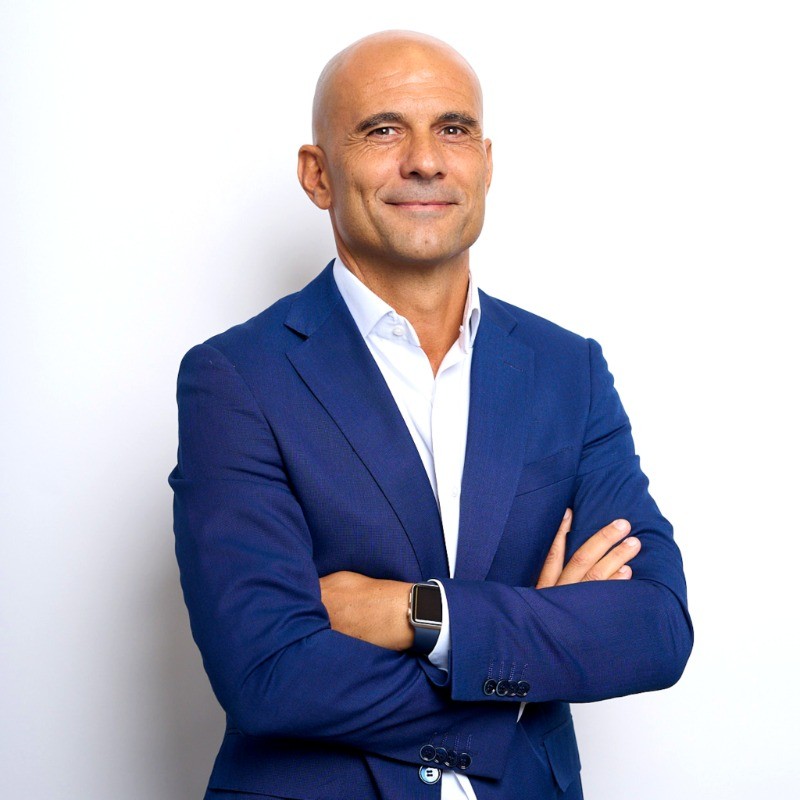Interview with
Development isn’t a ladder to climb, but a landscape to explore

Development is not a ladder to climb, but a territory to explore — full of detours, discoveries, and the courage to change direction without feeling off track
In this interview: Matteo Melchiorri, HR Leader, shares leadership lessons learned from mistakes, the value of non-linear and personalized development journeys, and the role of psychological safety and well-being in enabling people’s potential. He highlights the importance of diverse experiences, the courage of managers in empowering talent, and a people-centric approach that makes development sustainable and authentic.
Contents
- What is a mistake that helped you grow in your leadership?
- What makes a development journey effective today?
- How can development paths be both scalable and personalized?
- What is the difference between growing a talent and recognizing potential?
- How can you create an environment where people want and are able to express their potential?
- What is a concrete example of organizational well-being that impressed you or that you contributed to building?
- What is one belief about people development that you think we should abandon?
1) What is a mistake that helped you grow in your leadership?
At the beginning of my career, when I started taking on roles of responsibility and exercising leadership, I struggled to admit my vulnerabilities. I tried to hide them, thinking it was more professional that way. Over time, however, I realized it was a mistake: admitting your difficulties increases authenticity and has a profound impact on how you lead.
The mistake, then, was trying to always appear solid, without cracks. But that’s not realistic: there are moments when you feel less capable or when you lack certain skills. Sharing that with your team — in a thoughtful way — helps you grow, builds greater trust and connection, and paradoxically leads to stronger, more authentic, and truer outcomes.
2) What makes a development journey effective today?
We live in a world of work that is increasingly complex and less linear. Organizations operate in ever-evolving contexts, which is why I believe professional growth today increasingly happens through the accumulation of diverse experiences.
Learning and development are closely tied: facing new situations allows you to observe phenomena from different perspectives, acquire new skills, and thus build a more solid growth path.
Many managers push for vertical growth, but I believe this view needs to be challenged today: opening up to horizontal experiences — which broaden one’s scope — can truly make the difference.
In short: I believe an effective development journey is one that offers the possibility of living multiple experiences, pushing individuals to expand the boundaries of their activities and skills.
3) How can development paths be both scalable and personalized?
It seems like a trade-off… but I believe the key lies in building paths that are as “tailored” as possible, combining diagnostic tools (skill mapping, assessments, feedback systems, etc.) with a wide range of development tools (training platforms, coaching/mentoring, etc.) — especially digital ones. Today, technology allows us to scale access to learning and development tools, but the responsibility for growth must still remain in the hands of the individual, so they can define the path that works best for them.
Of course, guidance is needed: it’s not enough to offer a wide menu, people also need support in building the journey that makes sense for them.
In this way, you combine breadth and depth, and the path becomes truly personalized while remaining scalable.
4) What is the difference between growing a talent and recognizing potential?
Beyond the various potential-mapping systems companies may adopt, the truth is that when potential is there, you can see it. Great people emerge. Sure, the distinction between potential and performance may be useful theoretically, but I believe it’s hard to have true potential without performance, and vice versa.
That said, growing talent requires courage: you have to entrust them with increasing responsibility, even on projects that may seem “too big” compared to their past experience. That’s how real growth happens.
Valuing potential means daring: launching new, more complex challenges and seeing what happens. Good managers are those who raise the bar, trusting in their people’s talents, leveraging their learning agility, openness to change, and willingness to step outside their comfort zone.
In the end, if potential exists, you see it in the results. When potential is activated, it becomes real, it becomes performance. That’s when you truly recognize it.
5) How can you create an environment where people want and are able to express their potential?
You need an environment with so-called psychological safety, that allows people to express creativity, to experiment, and even to make mistakes. A culture of error is fundamental: mistakes are a source of learning, what sparks initiative.
A functioning organization is not one where everyone strictly follows the process or sticks rigidly to their job description, but one where process and job description are only a starting point, a perimeter to expand.
And here well-being becomes fundamental. Well-being does not end with welfare initiatives, but is much more. It means creating the conditions for a work environment that offers all-round well-being — mental, emotional, relational, and physical. Space is also crucial: if I create open, welcoming, transparent environments, I foster well-being and collaboration.
Well-being is not an add-on; it is a strategic lever.
6) What is a concrete example of organizational well-being that impressed you or that you contributed to building?
At Fastweb in recent years, we have often reflected on how to best use the budget dedicated to well-being, which is obviously never enough. We therefore decided to activate listening mechanisms, asking people directly what mattered most to them.
From some surveys, for example, the theme of caregiving — assisting loved ones — emerged strongly. So we tried to build ad hoc programs, customizable based on specific needs.
It’s a small example, but one that I believe well reflects the concept of people centricity.
7) What is one belief about people development that you think we should abandon?
I return a bit to the concept I expressed at the beginning of this interview… Too often, it is thought — both personally and managerially — that development must be linear and vertical.
Instead, development is made up of discontinuities, changes in direction, diverse experiences, horizontal movements.
If someone is an expert in one area, why couldn’t they change? Offering them new opportunities is the way to help them grow and keep them engaged. Changing direction doesn’t mean starting from scratch, but enriching one’s path.
Similar posts
Ragione sociale: Pack Srl
Sede legale e domicilio fiscale: Via Marconi 45, Bologna (BO) 40122, Italia
CF e P.IVA: IT04040451207
Codice destinatario SDI: USAL8PV
N. Iscrizione Registro Imprese: 04040451207

.png)














